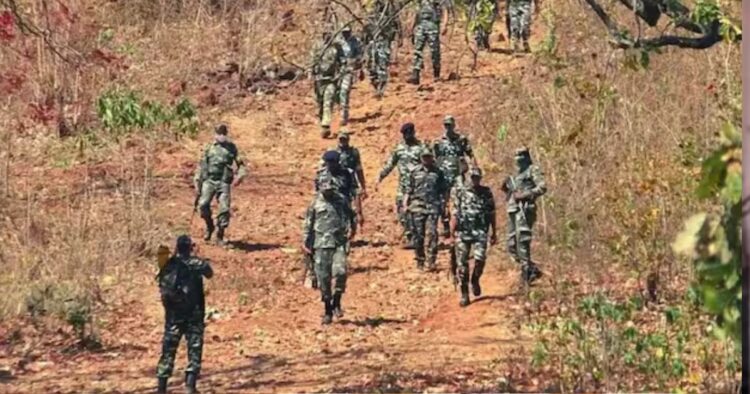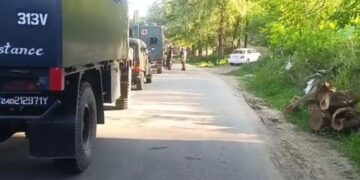The government has shifted its focus toward eliminating top Naxal leaders who orchestrated the insurgency. Over the past year, high-ranking Maoists with significant bounties on their heads have been targeted.
Security forces in Chhattisgarh achieved a major victory in their ongoing anti-Naxal operations, killing 22 Naxalites in two separate encounters on Wednesday.
The operations carried out in the districts of Bijapur and Kanker, also resulted in the loss of life of a District Reserve Guard (DRG) jawan.
Two Anti-Naxal Encounters in Chhattisgarh
The first and larger encounter took place in the dense forests along the Bijapur-Dantewada border in Gangaloor. The gunfight, which began at around 7 am, lasted for several hours as security forces exchanged heavy fire with the insurgents.
By the end of the operation, 18 Naxalites had been killed, and a substantial cache of arms, ammunition, and explosives was seized from the site.
Simultaneously, in a separate operation in the Kanker district, four Maoists were neutralized in an encounter near the village of Koroskodo in Chhotebethiya. Security forces, conducting a combing operation, were attacked by the Naxalites but retaliated strongly, eliminating the insurgents.
Government’s Response and Strategy
Union Home Minister Amit Shah hailed the operation as a significant step towards making India Naxal-free.
He reiterated the PM Narendra Modi government’s zero-tolerance policy towards extremism, emphasizing that those who refuse to surrender despite being offered rehabilitation opportunities will face relentless action.
The government has shifted its focus toward eliminating top Naxal leaders who orchestrated the insurgency. Over the past year, high-ranking Maoists with significant bounties on their heads have been targeted.
In June, last year, security forces killed Bade Chokka Rao, a key Maoist leader in Telangana with a bounty of Rs 50 lakh. While in January this year, Pratap Reddy, the Odisha state committee leader of CPI (Maoist) carrying a Rs 1 crore bounty, was eliminated along with 13 others.
Tactical Shifts and Strengthening Security
R K Vij, former special director general of police, attributed the success of these operations to a combination of strong political will from both New Delhi and Raipur, the deployment of advanced surveillance technology, and the establishment of more forward posts in Maoist-dominated areas.
The use of drones and other intelligence-gathering mechanisms has significantly enhanced the efficiency of counter-insurgency efforts.
Additionally, the recruitment of local youth and women into security forces has improved operational effectiveness. The induction of 2,000 Bastar fighters and additional DRG personnel has played a crucial role in strengthening the security grid.
The government has also prioritized infrastructure development, including road construction and telecom expansion in Maoist strongholds, facilitating better intelligence gathering and faster troop movement.
With intensified efforts and evolving strategies, security forces continue their push to dismantle Naxal networks and restore peace in the affected regions.

















Comments